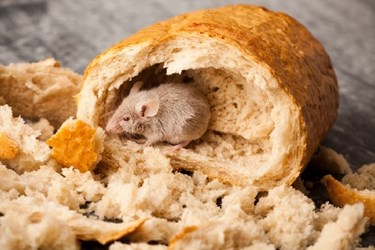6 Steps For Pest Management Integration
By Laurel Maloy, contributing writer, Food Online

The consequences of neglecting the implementation of a quality pest management program can result in hefty fines, the loss of your business, jail time, and ultimately, the loss of human life
Arguably one of the most important elements of a plan to prevent food contamination is the implementation of an effective pest management system. Integrated Pest Management (IPM) is addressed clearly within FSMA. In addition to Hazard Analysis and Critical Control Points (HAACP) and the FDA’s focus on prevention, a written plan for the prevention of foodborne illnesses will include a well thought out and effective IPM. This process is not an option; it is a necessity and should include the following:
Identify The Problems And The Pests
Each pest leaves its only little calling card, which is usually one of the first signs of infestation, even if you haven’t physically seen the pest. Any sign of feces anywhere in a food processing plant points to an infestation. On the other hand, if you see a cockroach in the daytime, chances are the infestation is so large that the walls cannot contain them all. Cockroaches and mice are typically nocturnal. Once you’ve identified the pest(s), you can take the appropriate action.
Determine Reasons For Infestation
Cockroaches and rodents need a food source, water, and shelter to survive. Leaky pipes or a debris-strewn plant floor are an open invitation to these pests, though in most responsibly run operations, these may not be as obvious. Utilizing HAACP guidelines will help as you look at each and every possible point for contamination and minimize that risk. Also look to transporters and points of entry. Pests love to travel.
Choose A Method For Eradication
Large operations may keep a pest management officer on the premises, though most mid-sized and small processors will opt for a professional pest control service. One important factor to consider is that this is not a one-time event. IPM is an on-going process and you may have to combine a number of methods to keep your particular pests under control. Both cockroaches and rodents are exceptionally prolific breeders. Open and honest communication with your pest management team will help in achieving the most successful IPM program.
Monitor And Inspect To Keep Pests At Bay
Regularly scheduled inspections by your pest management personnel should be part of your IPM; however, do not negate the important part your employees can play. Your employees can be your eyes. Educate your workforce, making them aware of what to look for, as well as the reasons IPM is so critical. Job security is a huge incentive.
Implement Preventive Measures
While inspecting and determining the reasons for the infestation, identify what you can do to prevent it. The most obvious will be sanitation. Almost all operations have room for improvement. Look for signs of accumulated moisture; check the darkest corners for cleanliness, and put a plan in place. Then, inspect both the outside and inside for locations where pests can get into your facility. Mice, for instance, can fit through a 1/4-inch crack, jump vertically up to foot and climb another 13 inches up smooth walls. They can also swim up to 1/2 a mile and can sprint up to 12 feet per second. Cockroaches? Depending upon the species, they can fit through a crack as thin as the edge of a dime or no wider than the edge of a quarter. Their menu includes anything organic, even leather, glue, and hair.
Document Everything
This will be critical in the face of an FDA audit. The presence of, or the lack of, an effective and well-managed IPM can make or break your business. Ensure every aspect of your IPM, from inception to implementation is documented. Annotate dates and times for inspections, the personnel involved, and the findings. Keep a map of trapping materials and a record as you move them or restock them. If pesticides are utilized, keep a list of the approved pesticides, the concentrations in which they are used, and the frequency with which they are applied. Attention to detail here will demonstrate to the regulatory authorities how seriously pest control is managed at your facility.
Besides the opportunity for inadvertently ending up with bug or rodent parts in food, it is scientifically proven that both cockroaches and rodents carry diseases transmittable to humans. Both of these pests are difficult to control, and, for most food-processing facilities, a never-ending battle. It takes attention to detail, diligence, a good plan, regular inspections, consistent monitoring, and a desire to win the war. Cockroaches alone can spread 33 different types of bacteria, seven kinds of pathogens dangerous to humans, and six types of parasitic worms. Humans are at risk of contracting Hantavirus (HPS) and Lymphocytic Chorio-meningitis (LCM), just by breathing dust contaminated with rodent urine or feces.
Foodborne illnesses caused by cockroaches and rodents:
- Salmonellosis
- Staphyloccoccus
- Streptococcus
- E. Coli
- Tularemia
- Leptospirosis
- Streptobacillus moniliformis (Rat Bite Fever)
It’s not unusual for plant management and employees to become complacent when faced with an on-going, and seemingly insurmountable, pest -control problem. The human animal has a remarkable capacity for adapting to any given situation, even that of cohabiting, or co-working, with pests. The case of Peanut Corporation of America (PCA) is a prime example of this. This is a habit business owners definitely want to discourage, or risk the severe consequences inaction can cause.
